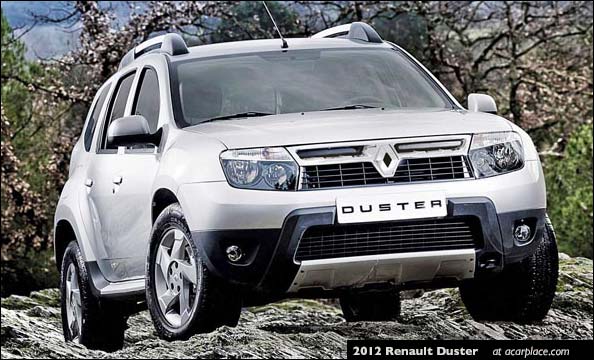
The car market in Europe is very, very different from the United States and Canada. Most people know that Europeans tend to buy smaller cars, and many are aware of their predilections for diesel engines (given very high gasoline prices). However, the dominance of the top three players is probably a surprise to most Americans. (Statistics are provided by the European Automobile Manufacturers Association, or ACEA, and cover the EU and EFTA countries).

Volkswagen, as usual, dominated European sales, with a 24% market share, the same as last year. The biggest gainer was the value Seat brand; Audi took a 12% hit and Porsche lost 4%, so the financials probably won’t be as good as VW leaders would like. Volkswagen itself (the brand) accounted for less than half the group’s sales (1.75 million cars), with the other brands being, in order, Audi, Skoda, Seat, Porsche, and “others”—Bentley, Lamborghini, and Bugatti.
PSA Group, sometimes known as Peugeot-Citroën, was a distant #2, with a 16% market share and 2.5 million sales. Most of these were Peugeots (971,437), followed by the former GM, still known as Opel and Vauxhall (884,412); Citroen got nearly 600,000 sales, and the rest were the high-end DS brand (45,419).
It looked like a huge year for Opel and Vauxhall, which shot up from 345,218 sales last year; Peugeot and Citroën’s 5% gains hardly seem worth mentioning in comparison. However, Opel/Vauxhall actually fell quite a bit; last year’s number isn’t a full year, but just the portion that PSA owned it. For the beginning of the year, and the first 600,000 or so sales, General Motors still owned the brands.

Renault, former ironic owners of American Motors, came in at #3, with 1.6 million sales (10% market share). They were led by the Renault brand itself, with 1.1 million sales, followed by Dacia (528,249), Lada (5,186), and Alpine (1,943). Next came BMW, with a million sales split between BMW itself and Mini, roughly 80/20.
Volkswagen and BMW are only minor players in the United States, but Europe’s #5 player, Fiat Chrysler, is the fourth biggest seller Stateside. They had a total of 1 million sales, just a few more than BMW, and around 2% less than in 2017. The biggest seller, by far, was Fiat, with 711,285 sales; but Jeep grew over last year by a stunning 56%, winding up with 186,674 sales and pushing its European market share, possibly for the first time, above 1.0%. As for the rest, Alfa Romeo actually lost 3% despite new product, ending up at 82,939; Lancia/Chrysler plummeted by 20% to 48,854 as the brand essentially winds down; and Dodge and Maserati fell by 8% to 9,559.
Ford has a single brand in Europe, named Ford; it maintained a 6% market share with just under a million sales, down by 2.4%. However, Ford’s new partnership with Volkswagen may help it stage a comeback and rise above FCA, which is ahead by less than 30,000 cars.

The rest of the European players are Daimler (Mercedes and Smart), with 970,187 sales (around 90-10 Mercedes-to-Smart), Toyota (with Lexus), at 760,069, Hyundai Kia, Nissan, Volvo, Jaguar Land Rover, Honda, and GM. GM had just 3,301 sales, down by 600,996, since it sold Opel and Vauxhall last year.
Hyundai and Kia are the same company, and their numbers are counted together in the United States; so, while the two, separately, are in the “minor players” part of the report, they really belong (gulp) in the #4 position, ahead of BMW, Fiat Chrysler, and Ford—which must be rather frightening to executives in those companies, especially since both South Korean brands jumped ahead of 2017 sales (by 3.9% and 4.7%). Together, they sold 1.04 million cars, good for a 6.7% market share.
 Genesis cars are still Hyundais in Europe, it seems
Genesis cars are still Hyundais in Europe, it seems
GM bailed out of Europe last year, while Ford chose to align itself with the mighty Volkswagen—possibly not the smartest thing they could do, because while VW is the strongest player in Europe, it has long been seeking as stronger foothold in the United States, and Ford really has more to lose in this deal. (It also has a lot to gain, since, despite paying a great deal of lip service to electrification, the company seems to be far behind just about everyone else.) As for Fiat Chrysler, it’s always hard to tell what they will do next, and whether they’ll go up or down; but, as diesels have rather suddenly fallen out of favor, the company must be happy that the American side had developed some serious hybrid expertise.

David Zatz has been writing about cars and trucks since the early 1990s, including books on the Dodge Viper, classic Jeeps, and Chrysler minivans. He also writes on organizational development and business at toolpack.com and covers Mac statistics software at macstats.org. David has been quoted by the New York Times, the Daily Telegraph, the Detroit News, and USA Today.

Leave a Reply